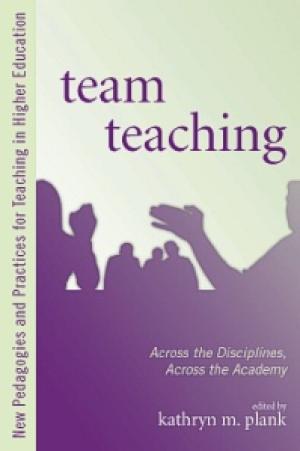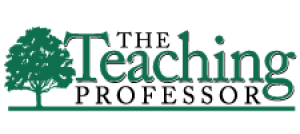Resources

For those considering adopting team teaching, or interested in reviewing their own practice, this book offers an over-view of this pedagogy, its challenges and rewards, and a rich range of examples in which teachers present and reflect upon their approaches. The interaction of two teachers—both the intellectual interaction involved in the design of the course, and the pedagogical interaction in the teaching of the course—creates a dynamic environment that reflects the way scholars make meaning of the world. The process naturally breaks down the teacher-centered classroom by creating a scholarly community in which teachers and students work together to understand important ideas, and where students don’t just learn content, but begin to understand how knowledge is constructed, grasp the connections between disciplines as well as their different perspectives, see greater coherence in the curriculum, and appreciate how having more than one teacher in the classroom leads naturally to dialogue and active learning. Each of the five examples in this book shares the story of a course at a different institution, and each is designed to reflect a number of different variables in team-taught courses. They represent courses in a variety of different disciplines, including the sciences, social sciences, humanities, and the arts; and at a range of levels, from first-year seminars to graduate courses. They also illustrate a number of different models for instructional teams, such as faculty from the same disciplines, from related disciplines, from two very different disciplines, from different institutions, and one pairing of a faculty member and a staff member. This book provides insight into the impact of team teaching on student learning and on faculty development. It also addresses the challenges, both pedagogical an administrative, that need to be addressed for team teaching to be effective. (From the Publisher)

Journal Issue.

Members of the Association of Theological Schools' Chief Academic Officers Society (CAOS) -- deans and CAOs at more than 250 theological schools in the United States and Canada -- face a number of unique vocational tasks and trials. C(H)AOS Theory brings together in one volume perspectives from more than thirty veteran deans on a variety of topics related to academic leadership, from understanding institutional contexts and nurturing relationships to negotiating conflict, setting and meeting academic goals, building budgets, working with assessment and accreditation, and more. With its rich amalgam of useful information, bold instruction on a host of academic leadership issues, and lively narratives on the ways different colleagues address common challenges, C(H)AOS Theory will serve as a helpful resource for academic leaders. (From the Publisher)

In Teachers as Learners, a collection of landmark essays, noted teacher educator and scholar Sharon Feiman-Nemser shines a light on teacher learning. Arguing that serious and sustained teacher learning is a necessary condition for ambitious student learning, she examines closely how teachers acquire, generate, and use knowledge about teaching over the trajectory of their careers. Together, these essays bear witness to the evolution and development of a body of scholarship about teacher learning in which the author herself played a catalyzing role. (From the Publisher)
Effective pedagogy in the capstone course or integrative seminar — a 1000 word response to a Call for Papers.
Effective pedagogy in the capstone course or integrative seminar — a 1000 word response to a Call for Papers.
Tomoko Masuzawa and a number of other contemporary scholars have recently problematized the categories of “religion” and “world religions” and, in some cases, called for its abandonment altogether as a discipline of scholarly study. In this collaborative essay, we respond to this critique by highlighting three attempts to teach world religions without teaching “world religions.” That is, we attempt to promote student engagement with the empirical study of a plurality of religious traditions without engaging in the rhetoric of pluralism or the reification of the category “religion.” The first two essays focus on topical courses taught at the undergraduate level in self-consciously Christian settings: the online course “Women and Religion” at Georgian Court University and the service-learning course “Interreligious Dialogue and Practice” at St. Michael's College, in the University of Toronto. The final essay discusses the integration of texts and traditions from diverse traditions into the graduate theology curriculum more broadly, in this case at Loyola Marymount University. Such confessional settings can, we suggest, offer particularly suitable – if somewhat counter-intuitive – contexts for bringing the otherwise covert agendas of the world religions discourse to light and subjecting them to a searching inquiry in the religion classroom.
One page Teaching Tactic: a free write exercise helps students reflect on and articulate their values.
One page Teaching Tactic: using an acronym to help students remember basic biblical chronology and plot outline.
One page Teaching Tactic: students memorize and recite a selection from another tradition's scripture.